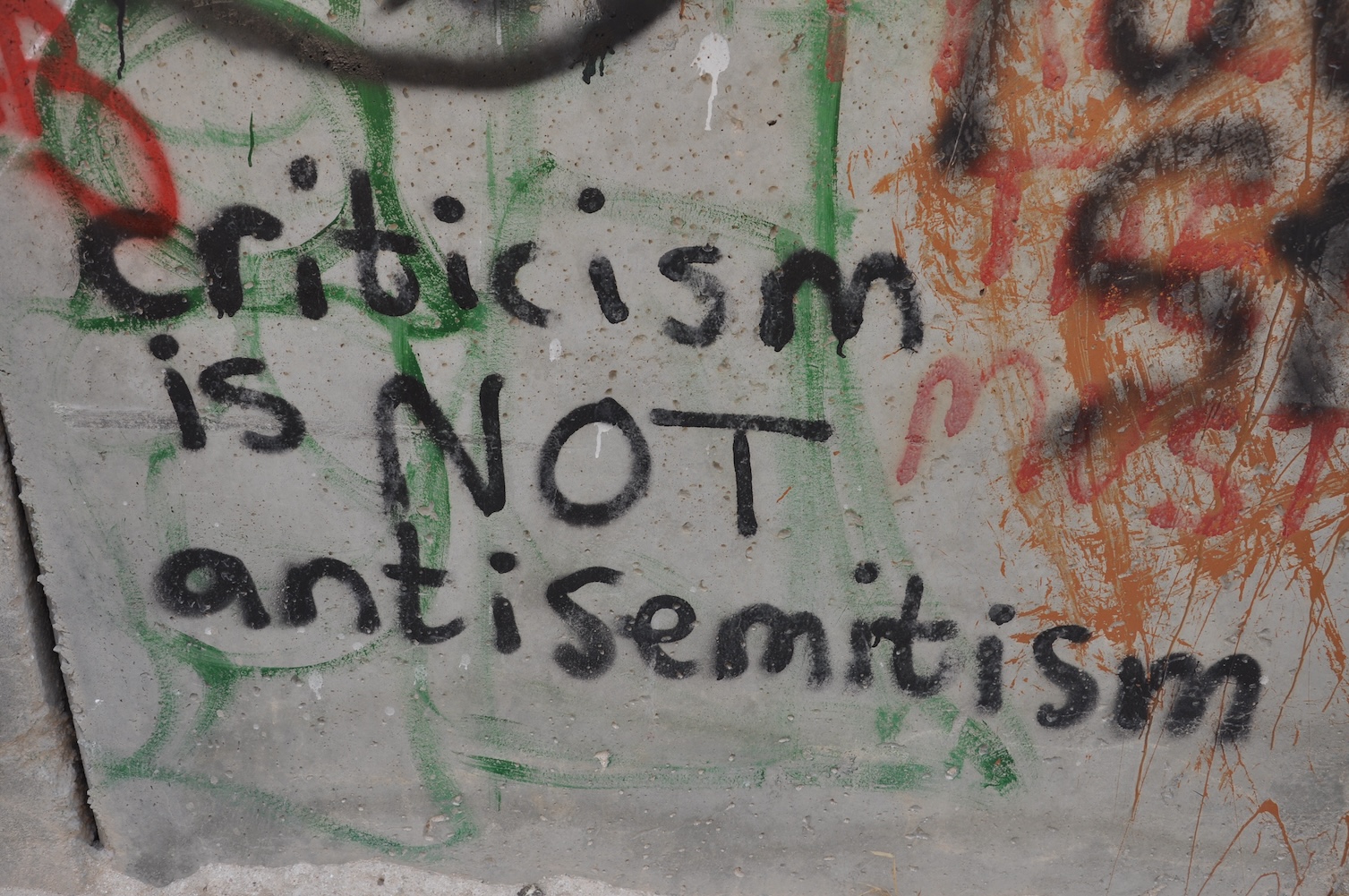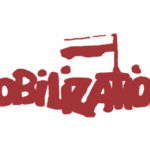The international law and human rights professor was at SNS to present his study on the british “Jewish Chronicle”

Antisemitism is being weaponized against those who have taken the streets against the war in Gaza (Cosmos director Donatella Della Porta wrote about the case of Germany). There are many examples of the induced moral panic since the start of the war. Neve Gordon, who is professor of international law and human rights at Queen Mary University of London, has done research on the oldest existing Jewish newspaper in the UK and has found a surprising pattern. Gordon was a guest at Palazzo Strozzi where he gave a lecture on The Weaponisation of Antisemitism: The Jewish Chronicle and the Production of a Moral Panic. We asked him to talk about the issue. We start talking about the story of the Jewish Chronicle.
“The Jewish Chronicle is the oldest existing Jewish newspaper. It was established in 1841 in the UK and it went through different leaderships. It began as a non-Zionist paper towards the end of the 19th century, at the beginning of the 20th century, there was a leadership struggle and it became Zionist in terms of the people that both owned it and edited it. The Chronicle has been an important media in different periods, as an example we can take the Balfour Declaration, when the British government put out promising Palestine to the Jews as a homeland. Before the Declaration was published, it first appeared in the paper. So, it had that kind of influence to ensure that through it the Balfour Declaration would be disseminated. It was attached to different governments, presenting itself as the voice of the Jewish population in the United Kingdom. Over the years it became, I think, more and more Zionist and supportive of Israel, regardless of its policies and practices.
What about antisemitism in the Jewish Chronicle?
Antisemitism traditionally is a form of hate, either speech or practice against Jews created through a variety of stereotypes, like blood libels against Jews, conspiracy theories that a group of Jews controls world governments, the banking system and the finance system. For decades and decades this was the meaning of antisemitism, but already in the 1960s there were those that claim that anti-Zionism is a form of antisemitism. And this picked up when the UN came out with a resolution that equated Zionism with racism. Israel’s reaction was to promote the idea that any form of anti-Zionism should be considered a form of antisemitism. But this didn’t really gain traction. Things began to change in the turn of the century after the eruption of the second intifada and the global war on terror. It is around that period that we see this new kind of false conflation between antisemitism and the criticism of Israel or anti Zionism gained much leverage and it began to be used in order to shield Israel from any kind of criticism from abroad.
What did you find in your research on the Jewish Chronicle?
The idea came a couple of years ago, while I was serving as the head of the British Society for Middle East Studies and the head of its Committee on Academic Freedom. We received complaints from either students or staff, primarily in the UK, that were being investigated for antisemitism. We noticed that there was a pattern: a journalist from the Jewish Chronicle contacts a person and says, “listen, you have said A, B and C on social media and we want your response by tomorrow morning”. At that time, our position was don’t respond, so they would then ask the university also for a comment on the social media activity of the student or staff. Either the journalist or someone else was data mining that would lead to letters of complaint that would bring universities investigations. This could lead to months in which staff members or students would be in a limbo. And in some cases, it led to disciplinary hearings and even to police arrests.
At one point there were 43 cases of people were under investigations for months. None of the cases were upheld, not a single one. Now, someone could say that this is the wheels of justice, but others could say that the Jewish Chronicle initiated, in many, not all these cases, was a kind of torturous process that the person had to go through and succeeded in creating a chilling effect and a silencing effect. It was this that led me to look more closely into the Jewish Chronicle to see how it understood antisemitism and how it used it. I did two kinds of studies, the first was a longitudinal study over a period of hundred years from 1925 to 2024. The idea was to begin about seven, eight, nine years before kind of Nazism rose to power in Germany, to see how the Jewish Chronicle related to the rise of Nazism and the Holocaust, and then to lead all the way to today. My hypothesis, of course, was that I’d find the peak of articles on antisemitism during the years of the rise of Nazism. The second study was on the content in the nine months before October 7. And nine months after, if in the first study of the hundred years, I just looked at the Appearance of the word in articles.
In the second study of 18 months, I actually coded the articles and looked at the way antisemitism was used and I looked more closely at accusations in the first study. The findings were very surprising: on average there was 220 articles that dealt with anti Semitism per year, 352, as suspected during 1938, which is probably the height of the Nazi regime when antisemitism was of public domain rather than later the gas chambers which were less known for many years.
But then when looking ahead you see that this was much less than during Jeremey Corbyn’s 2015 election as Labour leader, his 2019 national election bid and Israel’s war on Gaza, when the number of articles using the term antisemitism was 506, 675 and 672 respectively. If I came from another planet and opened the newspaper and wanted to know when antisemitism was most pronounced, it would appear that Jeremy Corbyn is much more dangerous than Hitler or 7th of October is worse than the camps. And this I find a concrete expression of what I would call the creation of moral panic among readers. Because at one point in the last few years, what you can see is every fifth or fourth article of the newspaper has the term antisemitism in it. So, if I’m a regular reader of the newspaper, in every fourth article there’s I see antisemitism everywhere around.
Antisemitism exists in England and it exists in the world and is live and kicking, but is actually what happens here is a major, major exaggeration of antisemitism and it is exaggerated in order to achieve political goals. And among them in the literature on moral panic is that when you in order to create a moral panic you also need to create what’s called the folk devil. And the folk devil in this case is the Palestinians and the pro-Palestinian activists. It’s not the right-wing antisemites, but it is a Palestinian teenager or student that says a slogan.
I found that very disturbing and concerning, but I did not know exactly how the word antisemitism is used. I did look into that and indeed I found that in most of the cases antisemitism is used not as in its traditional format, as hatred of Jew because they are Jew, but as criticism of Israel, criticism of Israel as a racist regime, criticism of Zionism. I found that the major institutions that are being criticized or being accused of antisemitism are the Labour Party and the Bbc news. And a much disproportionate amount of people that are being accused of antisemitism are people of color.
And the whole idea here is that kind of brown and black people, and particularly Muslim brown and black people, people are bringing anti Semitism to Europe, to England. We know that that is not exactly the true story. What is happening here is that there is the dilution of the term antisemitism and deflection from what is the real fight that needs to be carried out, the fight against real antisemitism, like the murder of two men, two Jews in a synagogue on Yom Kippur in Manchester just a few weeks ago, the kind of antisemitism that is directed against Jews, the kind of antisemitism of Elon Musk or the radical right in Europe really gets very little oxygen in the Jewish Chronicle, while Palestinians that are demanding self-determination are the ones that are presented as antisemites.
We have this ironical situation whereby if antisemitism and the fight against antisemitism in its traditional form was a fight against forms of racial governance and forms of oppression and discrimination against the people, because a certain trait, in this case Jews, the current accusation of antisemitism, is used to defend form of racial governance and oppression and repression against the native people. It’s a kind of mirroring of the violence of anti Semitism in a very different way. One is to protect the rights of the people that are being violated through racial policies. And one is to defend a government that has introduced racial policies.
The definition of antisemitism one uses is also an issue
The idea that antisemitism is a form of criticism against Israel is expressed in what’s called the the International Holocaust Remembrance Alliance working definition of antisemitism. I think 26 European governments have adopted this definition. Germany is at the forefront, but it’s almost every single government, many municipalities, many corporations. It has been extremely successful and it has been extremely successful because the Israeli government, different Israeli lobbying groups and different newspapers have been pushing it. And it has been vital. It has been used like an Iron Dome against protesters across Europe and indeed in North America. And what is going on here, in many ways, I think, is a struggle for common sense. And what has happened over the past few years is that the common sense has changed in a way in which Israel is perceived as the party that is violating the basic rights of the Palestinians, and as the party that is carrying out a settler colonial mission of displacing and replacing the Palestinian population.
The only people that don’t accept this narrative is the political elites and the financial elites that are using the IHRA definition as a way to clamp down against this new common sense which manifests itself in these mass protests across several countries, and in Italy as well. The IHRA definition now is being used as a way to struggle against this new common sense.
What do you think produces this attitude from political elites?
I think there is something attractive about this for many right-wing governments. Israel likes to present itself as the only democracy in the Middle East. And yet at the same time, it’s an apartheid regime, a settler, colonial apartheid regime that relates to the population living within its territory. There’s some that have full rights and some that don’t have full.
And so you have certain populations that have a lot of privileges and certain populations that are repressed, oppressed and can be in jail, in prison, can be kicked out, can be excluded.
I think right-wing political leaders like that, and they like what Israel is doing in many ways because they want to do it in their own societies, if it’s relating to the migrants, if it’s relating to different populations. And so, I think the model of how to protect what I would call a kind of, in an oxymoron term, a democratic apartheid, which is what a lot of leaders here are fantasizing about. There is this attraction to this idea of how do you take a privileged group and make them a victim and at the same time use that victimhood in order to silence, to extend, to oppress another group. Trump is more or less doing it, Orban and Meloni or the previous Polish government are or were all attracted to it. And Modi is attracted to it because of his relations with the Muslim, with the hundreds of millions of Muslim citizens.
28/10/2025

14/10/2025

Journal Article - 2025
Journal Article - 2023
Journal Article - 2023
Journal Article - 2023
Journal Article - 2023
Monograph - 2023
Monograph - 2022
Monograph - 2022
Journal Article - 2021
Journal Article - 2021